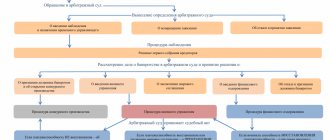Is it possible to engage in cargo transportation for individual entrepreneurs?
Some businessmen, due to high competition in the transportation of goods or passengers, consider it more profitable for themselves to work without registration. However, this is only possible for very small scale activities and until you have to meet with representatives of the police or tax service.
Freight transportation is a profitable and competitive business
In order for entrepreneurial activity to have a good prospect, for the business to be successful and continue to develop, it is necessary that cargo transportation by any type of transport (water, air or road) be carried out by an individual entrepreneur legally.
To provide such transport services there is no need to obtain any special permits or licenses. An example could be any transportation. However, despite this, there are still requirements for paperwork (for example, it is necessary to issue a waybill).
Important! An individual entrepreneur has the right to engage only in activities for which the OKVED code is officially registered with him. Therefore, if this was not done, the individual entrepreneur is obliged to make appropriate changes to his documents.
You can choose between four types of taxation systems. It is important not only to reduce the expected tax burden, but also to take into account the requirements imposed by law in order to provide services. You need to take into account the features of each of the possible options and switch to the one that will be most profitable.
Difficulties in the absence of registration of individual entrepreneurs for cargo transportation
Without opening an individual entrepreneur, a person engaged in the delivery of goods will face the following difficulties:
- Tax inspector claims
- Low trust of service customers . If a client needs to deliver valuable cargo from one point to another, then he is unlikely to work without a formal agreement with the contractor
- Receive payment for work performed only in cash . Legal entities prefer to pay for transport services non-cash. This could be a bank transfer or a transfer from one business card to another. And individuals are increasingly switching to non-cash payments and want to receive a receipt confirming payment
- The lack of rights of an entrepreneur . In the event of any conflict or controversial situation, the performer will be defenseless. For example, during transportation of cargo, a loss may occur, and the customer of the service will refuse to pay for the work. In this case, judicial or executive authorities will not be able to assist the executor in resolving the situation.
Which tax system to choose?
How to change the tax system for individual entrepreneurs and how often can this be done?
The correct choice of taxation method will allow individual entrepreneurs to make cargo transportation more efficient and profitable.
UTII
In this case, tax is paid not on real, but on imputed income. An important feature of the taxation system under consideration is that individual entrepreneurs with different income levels pay the same tax to the state. This is an example of a situation where legal requirements are beneficial to the individual entrepreneur.
In order to work this way, you must meet the following requirements:
- There are restrictions on the number of equipment used, including for passenger or cargo transportation. This number includes not only those cars that are owned, but also those that are received for use in some way (for example, through rent). An individual entrepreneur on UTII cannot have more than 20 units of equipment.
- The number of employees is limited to a limit of 100 people.
It is important to consider that an individual entrepreneur may have several types of activities, not just one. In this case, the tax will be considered separately for each of them. This cut can be used in conjunction with the simplified tax system.
Self-employed drivers have the right to transport goods
The disadvantage of this method is that the tax must be paid in full even when freight transportation services were not provided at all. The amount of payments depends on the region or region.
USN (Simplified)
Simplified tax regime. When using it, you must choose one of two options:
- Calculation of taxes based on income received without taking into account expenses. In this situation the rate will be 6%.
- Work on the “income minus expenses” system. In this case, to calculate the mandatory payment, documented out-of-pocket expenses are subtracted from the total income received. In this case, the tax base will be smaller, but the rate will be 15%.
An individual entrepreneur cannot refuse the simplified form until the end of the calendar year.
Working on the patent system may be more profitable. than on the general
This method of taxation can be beneficial for road freight transport, but it can only be used by those who meet the following conditions:
- The total number of the workforce can be no more than one hundred people.
- The reporting period here is the calendar year. The total amount of income for this period cannot be more than 150 million rubles.
- The residual value of fixed assets, according to reporting, cannot exceed 150 million rubles as of the beginning of the 4th quarter.
- In the first 9 months, the funds received should not exceed 112.5 million rubles.
Those who use this option receive a number of advantages:
- There are two options from which you can choose the most suitable one.
- Minimal effort is required to maintain accounting records. He doesn't need to keep a cash register.
- When paying the appropriate amounts to the Pension Fund, they can be deducted from personal income tax when paying for the year.
Despite restrictions on the number of people and revenue, this system is preferable in many cases. In this case, there is almost no need to fill out accounting documents.
You can start with one machine and create a profitable business
BASIC
The general system requires full accounting. It is suitable for those whose business is quite developed. With such activities, there are no restrictions on the number of trucks or the amount of income. In this case, it is convenient to work with those individual entrepreneurs who are VAT payers and legal entities.
However, in this case there are the following disadvantages:
- In the process of working as an individual entrepreneur, transportation requires the preparation of a significant number of documents.
- It will not be possible to maintain reports and fill out forms on your own and you will need to hire a professional accountant for this.
- You will need to pay VAT. However, you can refuse this by writing a corresponding application to the tax office.
Such a system is often not profitable enough for beginning entrepreneurs. In this regard, it is recommended to consider switching to one of the special taxation systems.
Patent (PSN)
Payment for a patent is carried out for a period of 1 to 12 months.
At the same time, a patent for cargo transportation implies the following restrictions for individual entrepreneurs:
- No more than 15 employees.
- Revenue during the period of validity of the document cannot exceed 60 million rubles.
- The area used during the entire period cannot be more than 50 square meters. meters.
Note! A patent must be obtained separately for each type of activity.
Taxation in the field of cargo transportation
Choose a simplified taxation system or UTII - these are the most common taxation options among entrepreneurs. Here is the simplest reporting, minimum restrictions and optimal taxes
Submit an application for transition to a special tax regime simultaneously with the submission of documents for registration of individual entrepreneurs. If, when opening an individual entrepreneur, you do not indicate that you want to work according to the simplified tax system, you will be left on the general system, which is assigned automatically
By registering as an individual entrepreneur, you can remain on the general taxation system or choose one of the special regimes:
- Simplified taxation system . When choosing the simplified tax system, you will pay taxes on your company’s income at a rate of 6% or at a 15% rate under the “income minus expenses” scheme. The tax period is represented by a calendar year. The tax return must be submitted at the end of the year
- A single tax on imputed income . When choosing UTII, taxes are paid on imputed income at a 15 percent rate. You will be required to pay a fixed amount each quarter. It doesn’t matter what your company’s income is, whether your business generates income or not, the amount will always be the same. The tax return is submitted by the entrepreneur based on the results of the quarter. UTII is valid only for those individual entrepreneurs whose fleet contains no more than 20 vehicles, including rented equipment
- Patent tax system . When choosing PSN, taxes are paid at a rate of 6%. No need to provide a tax return
Register your business for free and without visiting the tax office
It's simple: the bank prepares the documents and sends them to the tax office, and in the meantime you do business!
Open an IP for free
How much taxes do you need to pay?
The types of taxes and their amounts are determined by what system the individual entrepreneur uses. On the general system, you must pay income tax and value added tax. Under the simplified tax system, payment is made in accordance with the chosen work option (6% of the amount of income or 15% of the difference between income and expenses).
Which taxation system is better for individual entrepreneurs in retail trade - what to choose
Note! When using a patent or UTII, they pay only the amount established by regulations.
What documents are required when purchasing a vehicle?
Each stage of buying a car as an individual entrepreneur involves its own set of documents:
- Make a deal:
- supply agreement replacing the purchase and sale agreement;
- invoice;
- waybill (delivery and acceptance certificate).
- Registration of the vehicle in the traffic police and its registration:
- STS;
- PTS:
- receipt of payment of state duty;
- statement.
- Acceptance of a vehicle on the balance sheet as a fixed asset:
- Form OS-1 on acceptance and transfer of fixed assets;
- form OS-6 (inventory card);
- order from the head of the individual entrepreneur to put the fixed asset into operation.
What documents are needed
When traveling, the driver must have a completed waybill. It must be provided by the customer.
Since the driver can use his own or rented car, he must have documents that confirm the rights to use and drive (driver’s license, vehicle registration certificate, insurance policy, power of attorney if the vehicle is rented).
When checking, an individual entrepreneur may be required to provide a forwarding agreement, if one has been drawn up.
It is important to choose the right tax system
Waybill form for individual entrepreneurs
It is not necessary to strictly adhere to typographic forms. Waybills for individual entrepreneurs are not valid without the following details.
- The name – waybill – and its registration number.
- Date of issue and period of validity. Daily ones are issued at the beginning of each work shift. In long-term ones, the period must be indicated.
- Full contact details of the vehicle owner: full name, address and telephone number.
- Detailed information about the vehicle: type, model, license plate number, odometer data.
- Date and time of start/end of shift.
- Full name of the driver, a note on passing a pre- and post-trip medical examination.
Sections about the driver’s work and the result of using the car are filled out as desired. The first displays the number of flights per shift, their route, length in km and hours. In the second, the overall total is compiled: mileage, travel time for calculating wages. You can also provide graphs to display downtime, accidents and technical stops during a shift.
Is cargo transportation possible when self-employed?
When running a business, an entrepreneur strives not only to make it reliable and profitable, but also does everything possible to ensure that its scale grows. Until the beginning of 2020, it was profitable for a small business to open as an individual entrepreneur. Of course, there was still the opportunity to create a limited liability company, but in this case the costs of registration and operating activities were much higher.
Note! Starting from January 1, 2020, it became possible to engage in entrepreneurial activity by registering as a self-employed person. This opportunity is new and still raises various questions about how to properly register and start doing business in this status.
The activities of self-employed persons are regulated by Law No. FZ-422. It sets out restrictions for those who want to use such a tax system, including for cargo transportation and chartering. Here are some of them:
- While engaged in business, such a person does not have the right to hire employees.
- Self-employed people are not required to pay contributions to social funds. They do not have a fixed payment to the Pension Fund.
- When providing cargo taxi services (carrying out transportation for a fee in the interests of third parties), the driver is required to receive an electronic receipt for payment online using the appropriate application (the “My Tax” program) on a smartphone.
- This status may include persons whose annual income does not exceed 2.4 million rubles. Here we consider the amount that is calculated for the calendar year.
Self-employed people have the right to carry out cargo transportation, but must not use hired labor.
Self-employed people who transport goods are required to open and carry a waybill. It must be completed by the customer. Such persons pay a small tax, it varies depending on who the customer is:
- If transport is used for a legal entity, then the tax amount is 6% of the payment amount.
- When working with individuals, the rate will be lower - now it will be 4%.
Individual entrepreneurs are allowed to register self-employment in order to transport goods without refusing to register as an individual entrepreneur.
When registering, the individual entrepreneur must correctly indicate OKVED
Costs of purchasing a personal car
Before taking costs into account in the simplified tax system, think about how to prove to the tax authorities that you are using the car for business. The further your type of activity is from transportation or travel, the more difficult it is to do this.
An example from life: an individual entrepreneur is engaged in the installation of metal-plastic structures and takes into account the cost of a passenger car, which he, according to him, uses to “receive orders, take measurements and deliver components.” The tax office recognized this as unlawful, “since the entrepreneur carries out a type of activity that is not related to freight and passenger transportation,” and assessed additional taxes, penalties and fines.
The entrepreneur began to sue the tax authorities, and courts of various instances supported him. Remember the key phrases from the court ruling - they will be useful in case of disputes:
- “The car was purchased and used by the entrepreneur directly in the process of business activity, with the aim of generating income from this type of activity, and the tax authority’s arguments about the use of the vehicle for personal purposes are speculative.”
- “Tax legislation does not contain restrictions on including in expenses the costs of purchasing and servicing vehicles purchased for business activities. In this regard, the inspectorate’s arguments that expenses are accepted only when carrying out activities related to freight and passenger transportation are not based on the law.” (Resolution of the Federal Antimonopoly Service of the Ural District dated October 18, 2007 in case No. F09-8532/07-S3).
But you cannot hope that there will be no more claims from the tax office. The Ministry of Finance, in a letter dated March 26, 2008 No. 03-04-05-01/79, states that “a passenger car used by an individual entrepreneur to travel to the bank, tax inspectorates, technical service centers, to buyers and suppliers to conclude contracts, is not may be recognized as a primary means.”
It turns out that you are taking a risk if you take into account the costs of purchasing a car that is not necessary for your business. You may have to prove your position in court. But there is no guarantee that the court's decision will be as favorable.
Once again : first decide whether you can prove to the tax authorities the benefit of a personal car for business. What do you use it for? Does it help you generate income? Why can't you generate income without it? If you have answered these questions and even rehearsed the answer with a skeptical friend, you can take into account the costs of purchasing a car in the simplified tax system.
Submit reports in three clicks
Elba will prepare a tax return according to the simplified tax system and calculate taxes. The service is used by 100,000 individual entrepreneurs and LLCs. Try it too!
Try 30 days free Gift for new entrepreneurs A year on “Premium” for individual entrepreneurs under 3 months










